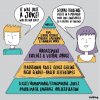Facing Patriarchy challenges current thinking about men’s violence against women. Drawing upon radical and intersectional feminist theory and critical masculinity studies, the book locates men’s violence within the structures and processes of patriarchy.
Violence
The UN Women Training Center has developed a great resource for men to educate ourselves: the Self-Learning Booklet: Masculinities and Violence against Women and Girls (2016).
The booklet was developed as the result of a series of training courses that aim to strengthen capacities of development practitioners and advocates to understand, integrate and address critical gender issues in their lives and work. This tool aims to assist both UN and non-UN staff to better understand the issues of masculinities in relation to violence against women and girls.
Research tells us that socially constructed gender norms which associate masculinity with power, violence and control can play a role in driving conflict and insecurity.
The SHED Manual: For workers engaging in men’s behaviour change to shed abusive beliefs and violence (2013) was developed over almost 20 years of practice in rural Australia by Chris Laming. The SHED (Self Help Ending Domestics) Project engaged with men and challenged them to look at themselves, as though in a mirror. It was ‘time and space for men to face who they are and what they have become and a chance to change what is not good’.
Sexist jokes often are dismissed or excused as harmless fun. Yet they have real, negative effects in the world. They are linked to sexist and violent behaviour, they worsen gender inequalities, and they increase tolerance for violence against women.
Terrorism, whether it is group-related or performed as lone actor terrorism, is a predominantly male phenomenon. Generally and throughout history, young males have been the main protagonists of criminal and political violence. This article aims to contribute, from different perspectives, to the question of what makes young men violent.
Most terrorists are men, points out Morgan in The Demon Lover: On the Sexuality of Terrorism (1989). Even though the stock image of a terrorist is a man in a ski mask, considerations of terrorists as men are often ignored, and discussions of terrorism as a political strategy about masculinity are typically overlooked. Terrorism - that act most explicit in its violent aggression, most obvious in its destructive aims and most hideously spectacular in its headlines - in fact, makes men invisible.





